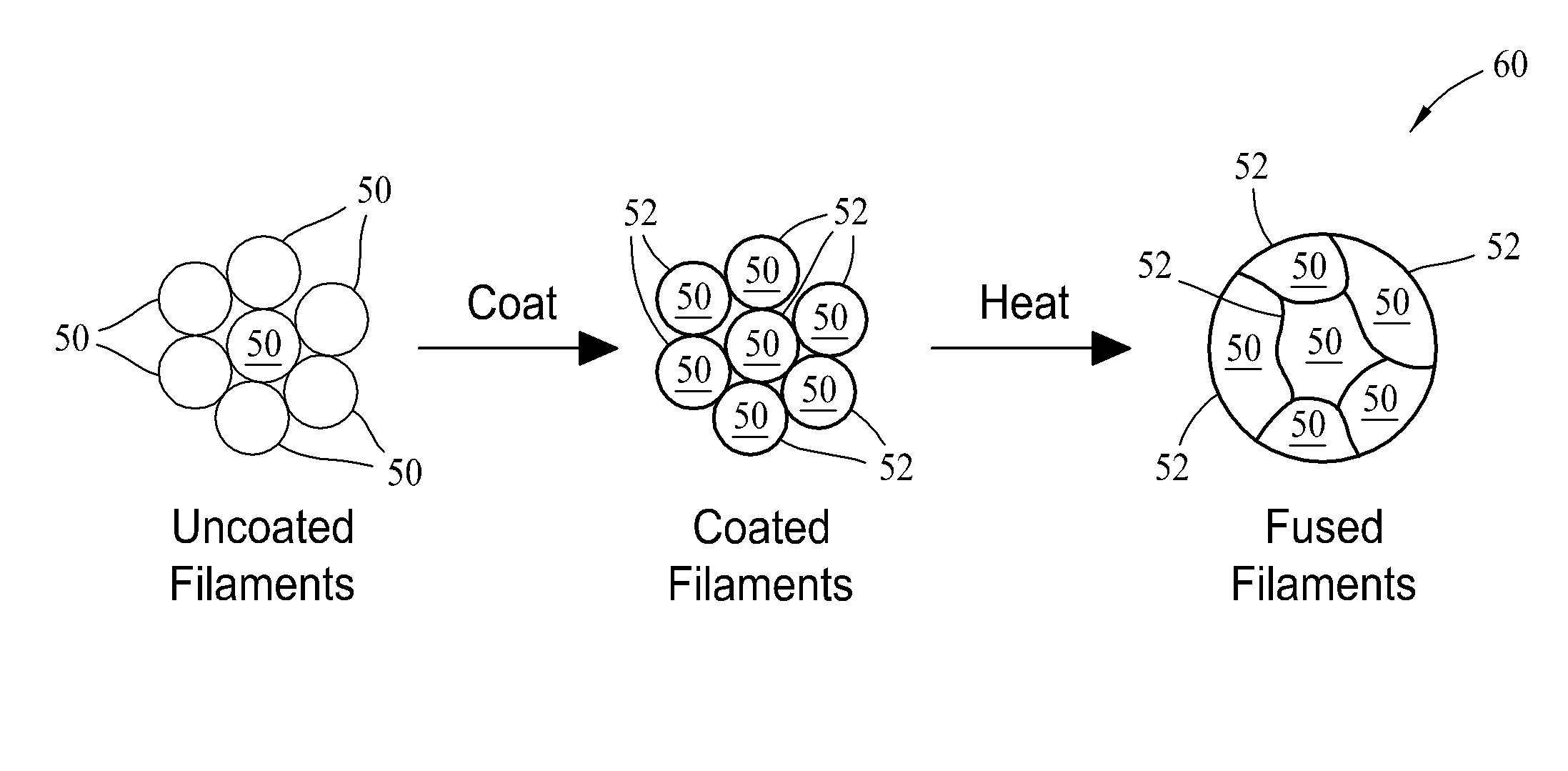Thermoplastic-based, carbon nanotube-enhanced, high-conductivity wire
- Summary
- Abstract
- Description
- Claims
- Application Information
AI Technical Summary
Problems solved by technology
Method used
Image
Examples
Embodiment Construction
[0013]The described embodiments seek to overcome the limitations of the prior art by placing carbon nanotubes (CNTs) on the outside of a polymer-based structure or other desired substrate to avoid the processing difficulties associated with dispersion of CNTs within the polymer before the structure is fabricated.
[0014]One embodiment, illustrated by the flowchart 10 of FIG. 1, includes a method for producing high-conductivity electrical wires based on thermoplastics and metallic carbon nanotubes (CNTs). First, a plurality of continuous, thermoplastic, filaments are provided 12. A coating is applied 14 to the outer surface of the fine, continuous thermoplastic filaments. The coating includes the CNTs. The coated filaments are then melt-processed 16 to form CNT-enhanced, high-conductivity thermoplastic wires. The melt-processing 16 steps include bonding the coating to the individual filaments and bonding the filaments together into a bundle onto which an outer coating, such as wire ins...
PUM
 Login to View More
Login to View More Abstract
Description
Claims
Application Information
 Login to View More
Login to View More - Generate Ideas
- Intellectual Property
- Life Sciences
- Materials
- Tech Scout
- Unparalleled Data Quality
- Higher Quality Content
- 60% Fewer Hallucinations
Browse by: Latest US Patents, China's latest patents, Technical Efficacy Thesaurus, Application Domain, Technology Topic, Popular Technical Reports.
© 2025 PatSnap. All rights reserved.Legal|Privacy policy|Modern Slavery Act Transparency Statement|Sitemap|About US| Contact US: help@patsnap.com



